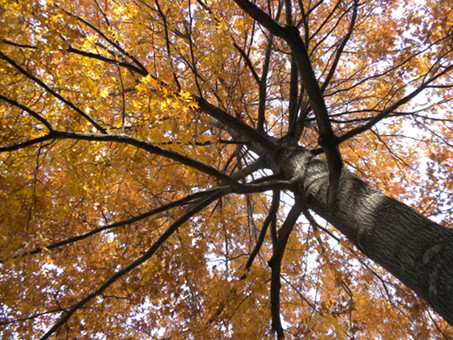There are numerous species currently in danger of extinction. Most of them are caused directly or indirectly by man: climate change, destruction of their habitat, illegal hunting, etc.
The Holocene Extinction, or the Sixth Extinction, has already cost the world thousands of beloved species due to human activity. Although this event has been ongoing for the past 10,000 years or so—since the last Ice Age, to be exact—the mass extinction has been accelerating at a dizzying pace.
Most of the threats facing endangered animals are caused by humans. In 2020, researchers sounded the alarm for more than 500 species of vertebrates “on the brink of extinction” within the next 20 years. This extinction crisis is being driven first and foremost by human activity.
Poaching, wildlife trafficking, and hunting all put animals at risk, but there is an even more daunting threat to endangered species that is being ignored: animal agriculture. Deforestation, habitat loss, overfishing, global warming, and other issues linked to animal farming are putting wild species in danger of collapse.
As industrial animal farming continues to encroach on the natural world, more and more species are being put in harm’s way.
Here are some of the incredible creatures we've driven to extinction in the last century and a half, including mammals, birds, reptiles, amphibians, fish, and invertebrates.
1. West African Black Rhinoceros
The last West African Black Rhino was seen in Cameroon in 2006. It was declared officially extinct in 2011.
2. Baiji White Dolphin
3. Pyrenian Ibex
One of four subspecies of the Spanish Ibex or Iberian Goat that was found in the Iberian Peninsula. The last Pyrenean Ibex was killed by a falling tree in northern Spain in 2000.
4. Passenger Pigeon
By the 19th century pigeon meat was commercialized as a cheap food for the poor, which resulted in hunting on a massive scale. The Passenger Pigeon died out in the wild by around 1900, with the last known individual dying in captivity in 1914.
5. Tasmanian Tiger
Native to Australia, Tasmania and New Guinea, the Tasmanian Tiger was a large carnivorous marsupial. The last wild Tasmanian Tiger was killed between 1910 and 1920, with the last captive one dying in Hobart Zoo, Tasmania in 1936.
6. Stellers Sea Cow
Within 27 years of discovery by Europeans, Steller’s Sea Cow was hunted to extinction.
7. Great Auk
A large and flightless bird found in the North Atlantic and as far south as Northern Spain. The last of these birds was killed by three men who caught it on St Kilda, Scotland in 1844. When a large storm surged, they believed that the auk was a witch and was causing the storm, so they killed it.
8. Dodo
The bird was hunted to extinction by sailors and their domesticated animals, and invasive species. The last widely accepted sighting of a Dodo was in 1662.
9. Woolly Mammoth
The Woolly Mammoth eventually disappeared 10,000 years ago through a combination of hunting by humans and the disappearance of its habitat through climate change. The last of the isolated woolly mammoth populations is believed to have vanished from Wrangel Island in the Arctic Ocean around 1700BC.
10. Sabre-Toothed Cat
11. Bramble Cay Melomys
These little guys were officially declared extinct by the International Union for Conservation of Nature (IUCN) in 2015. Native to Bramble Cay, a small island near the northern side of the Great Barrier Reef, it's reported that the rodents haven't been spotted since way back in 2009.
12. Spix Macaw
The Spix Macaw went extinct in the wild due to habitat destruction, illegal trapping and trade.
13. Quagga
The Quagga was native to South Africa and went extinct in the late 19th century. For a long time, the quagga was thought to be its own species before it was discovered that it was closely related to the Plains Zebra and was, in fact, a subspecies of the zebra.
Humans hunted the quagga to extinction.
14. The Golden Toad
The small toad was last seen in 1989 in a Costa Rican rainforest before being declared extinct in 1994.
15. Zanzibar Leopard
The leopard went extinct thanks to the belief that these animals were kept by witches; for this reason, locals aggressively hunted them.
16. Po'ouli (Native Hawai Bird )
17. Madeiran Large White
The stunning Madeiran Large White butterfly was found in the valleys of the Laurisilva forests on Portugal's Madeira Islands.
18. Tecopa Pupfish
The Tecopa pupfish, a native of the hot springs of the Mojave Desert, has the distinction of being the first animal declared extinct under the provisions of the Endangered Species Act of 1973. The pupfish's decline was precipitated when its natural habitat was encroached upon by developers.
19. Falkland Islands Wolf
The Falkland Islands wolf went extinct in the late 1800s and was also known as the Antarctic wolf and the Falkland Islands fox.
20. Javan Tiger
21. Round Island Burrowing Boa
the introduction of non-native species of rabbits and goats to the island destroyed vegetation and upset the boa's habitat, leading to its eventual extinction.
22. Pinta Island Tortoise
23. Dutch Alcon Blue Butterfly
In our next chapter we shall take a look at the species in risk of extinction.







